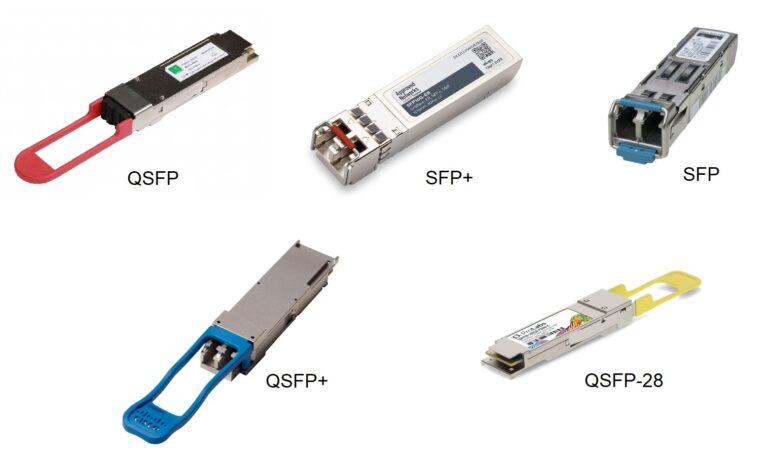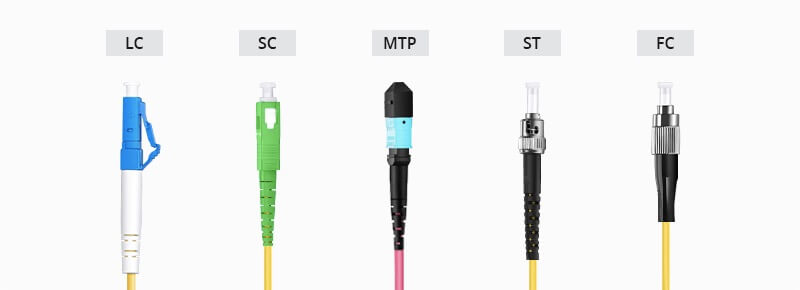Network Cables and Connectors


Overview of most commonly used Networking Cables, and Connectors
In the modern era of computing, various ports, cables, and connectors are utilized to connect peripherals, transfer data, and facilitate communication between devices. Understanding these components is essential for effectively interfacing different hardware components. Below is an overview of some commonly used Networking cables, and connectors:
Ethernet:
- Functionality: Ethernet ports and cables are used for wired network connections, providing reliable and high-speed data transmission between computers, routers, switches, and other networking equipment.
Ethernet Cable Types:
- Cat5e — Enhanced version of Cat5, supports up to 1 Gbps speeds.
- Cat6 — Supports higher bandwidths than Cat5/5e, often with foil or braided shielding.
- Cat6a — “Augmented” version of Cat6, supports up to 10 Gbps speeds over longer distances.
- Cat7 & Cat7a — High-performance cables, but overkill for most applications.
- Cat8 — The latest Ethernet cable standard, supports up to 40 Gbps speeds.
| Cable Type | Speed | Max Data Rate | Maximum Frequency | Shielding |
|---|---|---|---|---|
| Cat 5e | 1Gbps | 1,000 Mbps / 1 Gbps | 100MHz | No |
| Cat 6 | 1Gbps | 1,000 Mbps / 1 Gbps | 250MHz | Sometimes |
| Cat 6a | 10Gbps | 10,000 Mbps / 10 Gbps | 500MHz | Sometimes |
| Cat 7 | 10Gbps | 40,000 Mbps/ 40 Gbps | 600MHz | Yes |
| Cat 8 | 40Gbps | 25 Gbps or 40 Gbps | 2GHz | Yes |
Ethernet Connectors:
-
RJ45 — (Registered Jack 45) is a standard connector used for Ethernet networking cables. It is the most common type of connector used for connecting computers and other network devices to local area networks (LANs) and the Internet. RJ45 connectors resemble the RJ11 connectors used for telephone connections but are larger in size and have more pins.
-
GG45 — (GigaGate 45) is a next-generation Ethernet connector designed to support higher data rates and improved signal integrity compared to traditional RJ45 connectors. With backward compatibility with RJ45 connectors, GG45 facilitates seamless migration to higher-speed Ethernet standards while ensuring compatibility with existing cabling infrastructure. Offering aggregate data rates of up to 100 Gbps, GG45 connectors are ideal for bandwidth-intensive applications such as artificial intelligence, machine learning, and high-definition video streaming. GG45 ports support four lanes operating at 25 Gbps each, delivering increased bandwidth and performance for modern networking environments.
-
EtherCON RJ45 — A ruggedized version of the RJ45 connector, used in professional A/V applications.
-
RJ11 (Registered Jack 11) is a standard connector primarily used for telephone connections in residential and small-scale commercial environments. It facilitates the connection of telephones, fax machines, and other analog devices to telephone networks. Resembling RJ45 connectors but smaller and with fewer pins, RJ11 connectors are known for their simplicity and ease of use. They are commonly found in households and small businesses, providing a standardized interface for voice communication over telephone networks. While capable of supporting basic voice services and analog connections, RJ11 connectors are not designed for high-speed data transmission.

GG45, RJ45 & EtherCON RJ45
-
SFP (Small Form-factor Pluggable): SFP ports are commonly found on switches, routers, and network interface cards. They support data rates up to 1 Gbps (Gigabit Ethernet) and offer hot-swappable capabilities, enabling easy installation and removal of SFP modules without interrupting network operations.
-
SFP+ (Enhanced Small Form-factor Pluggable): SFP+ is an enhanced version of SFP, supporting higher data rates of up to 10 Gbps (10 Gigabit Ethernet). SFP+ ports are widely used in enterprise networks, data centers, and telecommunications infrastructure to meet the growing demand for high-speed connectivity.
-
SFP28 (Small Form-factor Pluggable 28): SFP28 builds upon the capabilities of SFP+ by supporting even higher data rates, reaching up to 25 Gbps. SFP28 ports are commonly deployed in high-performance computing environments, cloud data centers, and emerging technologies such as 5G networks.
-
QSFP+ (Quad Small Form-factor Pluggable Plus): QSFP+ is a multi-lane interface that supports aggregate data rates of up to 40 Gbps. It consists of four independent channels, each capable of transmitting data at 10 Gbps. QSFP+ ports are used for high-density networking applications, such as data center interconnects, high-speed storage networks, and high-performance computing clusters.
-
QSFP28 (Quad Small Form-factor Pluggable 28): QSFP28 is the next-generation version of QSFP+, offering aggregate data rates of up to 100 Gbps. QSFP28 ports support four lanes operating at 25 Gbps each, providing increased bandwidth for bandwidth-intensive applications like artificial intelligence, machine learning, and high-definition video streaming.

Image Source:
| Connector Type | Max Data Rate | Maximum Frequency | Shielding |
|---|---|---|---|
| SFP | 1 Gbps | 1 GHz | Unshielded |
| SFP+ | 10 Gbps | 3 GHz | Unshielded |
| SFP28 | 25 Gbps | 12.5 GHz | Unshielded |
| QSFP+ | 40 Gbps | 10 GHz (per channel) | Shielded |
| QSFP28 | 100 Gbps | 25 GHz (per channel) | Shielded |
The choice of Ethernet cable and connector type depends on the required data rate, cable length, and network architecture. Proper compatibility and shielding are important considerations when integrating different Ethernet components.
Fiber Connectors:
- Functionality: Fiber optic connectors are used to terminate optical fibers, enabling high-speed data transmission in telecommunications and networking applications.
Types of Fiber Connectors:
- LC (Lucent Connector) — Small form-factor connector with a latch mechanism, widely used in data centers and telecommunications.
- SC (Subscriber Connector) — Push-pull connector with a square shape, commonly used in Ethernet and telecommunications applications.
- MTP/MPO (Multi-Fiber Termination Push-On/Pull-Off) — High-density connector used for multi-fiber applications such as data centers and high-speed networks.
- ST (Straight Tip) — Features a bayonet-style coupling mechanism, commonly used in older networking equipment.
- FC (Fiber Connector) — Screw-on connector with a threaded coupling mechanism, often used in telecommunications and test equipment.

Image Source:
Single vs Multimode Fiber
| Cable Type | Connector Type | Speed | Max Data Rate | Maximum Frequency | Maximum Range |
|---|---|---|---|---|---|
| Single-mode Fiber (OS1/OS2) | SC, LC, FC, ST, MTP/MPO | 100 Gbps+ | ~100 km | ||
| Multimode Fiber (OM1/OM2) | SC, LC, ST, MTP/MPO | 10 Gbps | 10 Gbps+ | 500 MHz | ~2 km |
| Multimode Fiber (OM3/OM4) | SC, LC, ST, MTP/MPO | 100 Gbps | 100 Gbps+ | 2000 MHz | ~1 km |
| Multimode Fiber (OM5) | SC, LC, ST, MTP/MPO | 100 Gbps | 100 Gbps+ | 3500 MHz | ~1 km |
Single-mode Fiber:
- Designed for long-distance communication.
- Uses a narrow core, enabling higher bandwidth and longer transmission distances (up to 100 kilometers).
- Commonly used in telecommunications and high-speed data transmission.
Multimode Fiber:
- Suited for shorter-distance applications.
- Has a larger core diameter, making it more cost-effective and easier to install.
- Used in local area networks (LANs), data centers, and short-distance telecommunications.

Image Source: